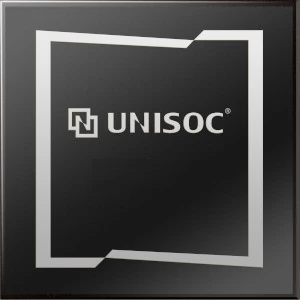MediaTek Dimensity 800U vs Unisoc Tiger T612
The Unisoc Tiger T612 and the MediaTek Dimensity 800U are two processors that differ in their specifications and capabilities.
Starting with the Unisoc Tiger T612, it has an architecture comprising two Cortex-A75 cores clocked at 1.8 GHz and six Cortex-A55 cores also clocked at 1.8 GHz. This processor has a total of eight cores and an instruction set of ARMv8.2-A. It is manufactured using 12 nm lithography, which indicates its power efficiency. The TDP (Thermal Design Power) of this processor is 10 Watts, suggesting moderate power consumption.
On the other hand, the MediaTek Dimensity 800U boasts an architecture that consists of two Cortex-A76 cores clocked at 2.4 GHz and six Cortex-A55 cores clocked at 2.0 GHz. With a total of eight cores, it shares the same ARMv8.2-A instruction set as the Unisoc Tiger T612. However, the Dimensity 800U is manufactured using a more advanced 7 nm lithography process, indicating superior power efficiency compared to its counterpart. Additionally, the Dimensity 800U also features an NPU (Neural Processing Unit), providing enhanced neural processing capabilities.
While both processors have similar core configurations and instruction sets, the key differences lie in their lithography and neural processing capabilities. The MediaTek Dimensity 800U's use of 7 nm lithography allows for higher power efficiency, which can contribute to improved performance and better battery life compared to the Unisoc Tiger T612. Additionally, the inclusion of an NPU in the Dimensity 800U opens up possibilities for advanced artificial intelligence tasks.
In summary, while the Unisoc Tiger T612 and MediaTek Dimensity 800U share similarities in terms of their core configurations and instruction sets, the Dimensity 800U excels with its superior lithography and additional NPU capabilities. These differences indicate that the Dimensity 800U may deliver better overall performance and power efficiency compared to the Tiger T612.
Starting with the Unisoc Tiger T612, it has an architecture comprising two Cortex-A75 cores clocked at 1.8 GHz and six Cortex-A55 cores also clocked at 1.8 GHz. This processor has a total of eight cores and an instruction set of ARMv8.2-A. It is manufactured using 12 nm lithography, which indicates its power efficiency. The TDP (Thermal Design Power) of this processor is 10 Watts, suggesting moderate power consumption.
On the other hand, the MediaTek Dimensity 800U boasts an architecture that consists of two Cortex-A76 cores clocked at 2.4 GHz and six Cortex-A55 cores clocked at 2.0 GHz. With a total of eight cores, it shares the same ARMv8.2-A instruction set as the Unisoc Tiger T612. However, the Dimensity 800U is manufactured using a more advanced 7 nm lithography process, indicating superior power efficiency compared to its counterpart. Additionally, the Dimensity 800U also features an NPU (Neural Processing Unit), providing enhanced neural processing capabilities.
While both processors have similar core configurations and instruction sets, the key differences lie in their lithography and neural processing capabilities. The MediaTek Dimensity 800U's use of 7 nm lithography allows for higher power efficiency, which can contribute to improved performance and better battery life compared to the Unisoc Tiger T612. Additionally, the inclusion of an NPU in the Dimensity 800U opens up possibilities for advanced artificial intelligence tasks.
In summary, while the Unisoc Tiger T612 and MediaTek Dimensity 800U share similarities in terms of their core configurations and instruction sets, the Dimensity 800U excels with its superior lithography and additional NPU capabilities. These differences indicate that the Dimensity 800U may deliver better overall performance and power efficiency compared to the Tiger T612.
AnTuTu 10
Total Score
GeekBench 6 Single-Core
Score
GeekBench 6 Multi-Core
Score
CPU cores and architecture
| Architecture | 2x 2.4 GHz – Cortex-A76 6x 2.0 GHz – Cortex-A55 |
2x 1.8 GHz – Cortex-A75 6x 1.8 GHz – Cortex-A55 |
| Number of cores | 8 | 8 |
| Instruction Set | ARMv8.2-A | ARMv8.2-A |
| Lithography | 7 nm | 12 nm |
| TDP | 10 Watt | |
| Neural Processing | NPU |
Memory (RAM)
| Max amount | up to 12 GB | up to 8 GB |
| Memory type | LPDDR4X | LPDDR4X |
| Memory frequency | 2133 MHz | 1600 MHz |
| Memory-bus | 2x16 bit | 2x16 bit |
Storage
| Storage specification | UFS 2.2 | UFS 2.2 |
Graphics
| GPU name | Mali-G57 MP3 | Mali-G57 MP1 |
| GPU Architecture | Mali Valhall | Mali Valhall |
| GPU frequency | 850 MHz | 650 MHz |
| Execution units | 3 | 1 |
| Shaders | 48 | 16 |
| DirectX | 12 | 12 |
| OpenCL API | 2.1 | 2.1 |
| OpenGL API | ES 3.2 | ES 3.2 |
| Vulkan API | 1.2 | 1.2 |
Camera, Video, Display
| Max screen resolution | 2520x1080@120Hz | 2400x1080 |
| Max camera resolution | 1x 64MP, 1x 20MP + 1x 16MP | 1x 50MP |
| Max Video Capture | 4K@30FPS | FullHD@30fps |
| Video codec support | H.264 (AVC) H.265 (HEVC) VP9 |
H.264 (AVC) H.265 (HEVC) VP8 VP9 |
Wireless
| 4G network | Yes | Yes |
| 5G network | Yes | Yes |
| Peak Download Speed | 2.77 Gbps | 0.3 Gbps |
| Peak Upload Speed | 1.2 Gbps | 0.1 Gbps |
| Wi-Fi | 5 (802.11ac) | 5 (802.11ac) |
| Bluetooth | 5.1 | 5.0 |
| Satellite navigation | BeiDou GPS Galileo GLONASS QZSS |
BeiDou GPS Galileo GLONASS |
Supplemental Information
| Launch Date | 2020 Quarter 3 | 2022 January |
| Partnumber | MT6853V, MT6853V/TNZA, MT6853/TNZA, MT6853T | T612 |
| Vertical Segment | Mobiles | Mobiles |
| Positioning | Mid-end | Mid-end |
Popular comparisons:
1
Samsung Exynos 9820 vs MediaTek Helio P35
2
MediaTek Dimensity 6020 vs Qualcomm Snapdragon 8 Gen 1
3
MediaTek Dimensity 800 vs HiSilicon Kirin 980
4
Qualcomm Snapdragon 632 vs Apple M3 (iPad)
5
Qualcomm Snapdragon 765G vs MediaTek Helio G90T
6
HiSilicon Kirin 659 vs HiSilicon Kirin 930
7
MediaTek Dimensity 1000L vs MediaTek Dimensity 7050
8
MediaTek Dimensity 7200 vs MediaTek Dimensity 9400 Plus
9
Qualcomm Snapdragon 480 vs Qualcomm Snapdragon 8 Plus Gen 1
10
MediaTek Dimensity 920 vs Samsung Exynos 2400

